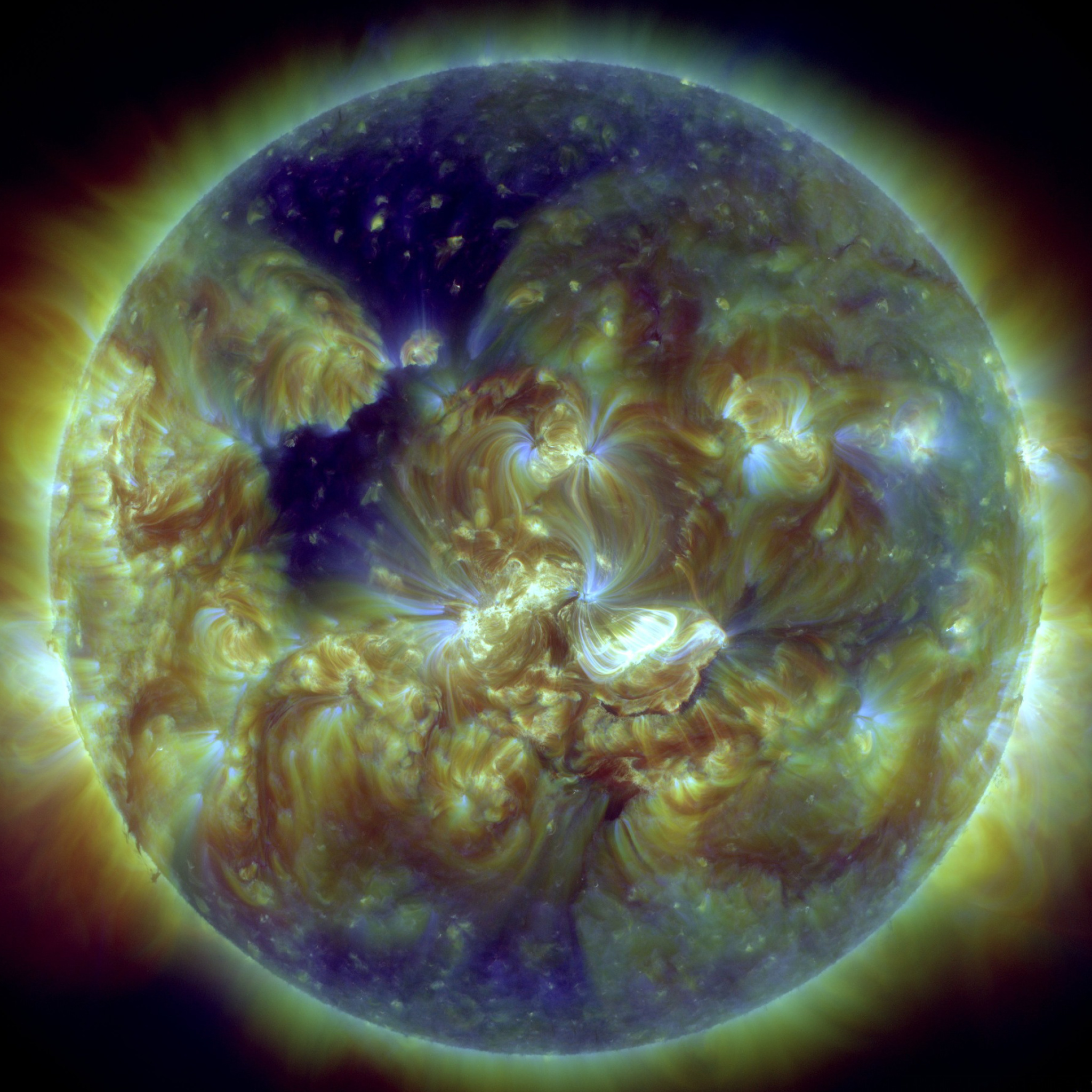By: Youheng Zhong
Imagine if you looked up to the sky one day and saw a mesmerizing, green aurora that stretched from one pole of a planet to the other. That’s exactly what the satellite MAVEN captured on May 20th.
On May 20th, a massive solar storm slammed into Mars, barraging it with waves of plasma and radiation all over the surface of the planet. As the charged particles reacted with the atmosphere, Mars was encased in a striking green aurora that covered the red planet from pole to pole.
So how did this phenomenon happen? One reason is that Mars has a thin atmosphere (gases that surround a planet) and lacks a magnetic field. Because Mars lacks a magnetic field, the charged particles from the solar storm had no resistance and easily penetrated the atmosphere all over the planet, not just at the poles like on Earth. This allowed the particles to collide with gases all over Mars’s atmosphere, creating a beautiful, jade-green aurora from pole to pole.
Another factor is that the Sun is starting to reach its peak years in its current solar cycle. At this point, the Sun has twisted and contorted its magnetic field so much that it occasionally gives in and snaps, releasing large volumes of high-energy particles, plasma, or electromagnetic radiation. This “snap” is what causes massive solar storms like the one we had in May. This also means that we’ll experience many more “snaps” later in the year as the Sun approaches its solar maximum, its highest rate of solar activity.
Despite the beauty of this astronomical event, it also reminds us of the dangers solar storms pose. One of the effects of solar storms is high levels of radiation. On Earth, we have a magnetic field, which intercepts most of the solar flares during solar storms and protects us from radiation. But Mars doesn’t have a magnetic field. During the solar storm, NASA’s Curiosity rover registered levels of radiation over ten times the normal levels. Had an astronaut been there, they would have received a dose of radiation equivalent to 30 chest X-rays.
Solar flares or outbursts from the Sun can also damage or disrupt critical or vital infrastructure such as satellites, power grids, and radio communications. This can affect us on an individual level, as many might lose power or be unable to navigate (GPS). In addition, many places have been transferring to mobile payment, such as Apple Pay and Zelle. All of this means that one too-big solar storm directed our way could dismantle our communications, power, travel, and banks. Thank the heavens that we have a magnetic field and a stable atmosphere to intercept all of this, unlike Mars.











